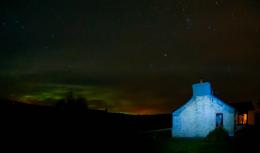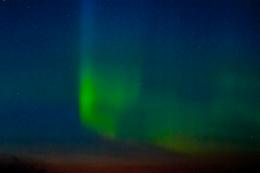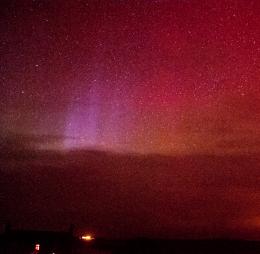Posted by Mark on Tuesday, 6 September 2016

This week is the start of the Orkney Science Festival ( 1-7th Sept) there are over 80 talks from Tidal Power to Neolithic people plus lots of open exhibitions and other events. I hope to attend some of them this year as I never have been able to before.
Anna flew out the other day to attend the World Bridge Championships which this year are in Poland. This leaves me ‘home alone’, I have been kept very busy catching up watching some of the saved programs on the TV recorder that Anna is not interested in as well as watching the Grand Prix from Monza this last weekend! There has been the odd late night as well, as in between watching the odd film, I kept popping outside to keep a look out for a display of the Northern Lights, one night this meant that I hit the pillow at 2am. We are very fortunate here, as we can see the Aurora from our back garden, as there are no street lights here and so when we get a clear night and the sun has decided to go fully below the horizon ( this doesn’t happen in the summer ) we get the most fantastic starry skies and on occasions a display of the Northern lights.
So far this year the displays have been good but not spectacular, one can get rather blasé about such things and I only think that it is a good display if you can see the ‘dancers’ moving about with the naked eye. Although you will often see amazing photos of the Aurora, the reality is not often like that with the naked eye, this is because the camera sensor is far more sensitive to the light than the human eye, so what seems just like a faint green glow to the observer will often photograph as an amazing display of greens and purples.
If you want to see this amazing natural phenomenon then you need a dark clear night, little or no light pollution. Give your eyes about half an hour to get used to the low light and avoid using any torches, if you need light to operate your camera or to stop falling over then use a red light, this will not affect your ‘night vision’ to the same extent as a normal white torch. I have a small head torch which has a red LED light in it, true it does look a little strange walking about with a red light in the middle of my forehead but at least I can see the cat before I trip over him!
There are lots of ways to photograph the Aurora, but remember that you are dealing with a very faint object so long exposures will be needed and this means hand holding your camera/phone is right out. I use a Nikon SLR on a tripod and a wide angle lens. Exposures of 20sec are normal and a high ISO setting. You need to experiment but the important thing is to use your camera in fully manual mode, this includes the focus. Auto focus is unlikely to work because of the low light, but this is not a problem as you just need to manually set the focus to infinity as that is sort of where the Northern lights are.
So with your camera mounted on a tripod, manual focus set to infinity, manual exposure set to about 20 secs F4 and with an ISO of around 2000 + you should see something on your camera when you take a photo. Lots of experimentation is required and if you can shorten the exposure time then so much the better as the stars will not blur. With long exposures they start seem to move, of course they are not moving, but the earth is !
I have uploaded a couple of my Aurora photos, I am still learning and experimenting. The great thing about this time of the year is that it is not too cold to stand outside waiting for another 30 sec exposure, trust me in the winter it is a different story, but the nights are darker!

